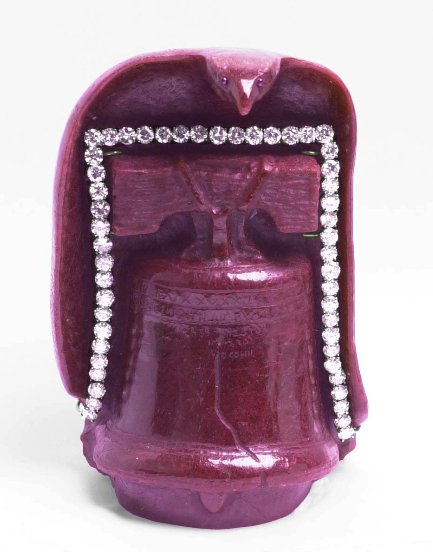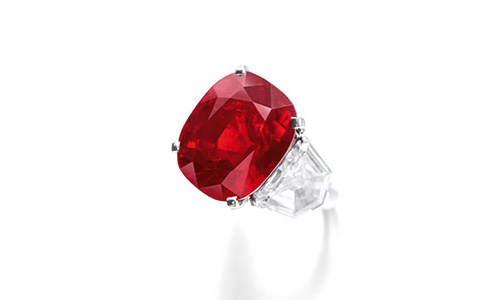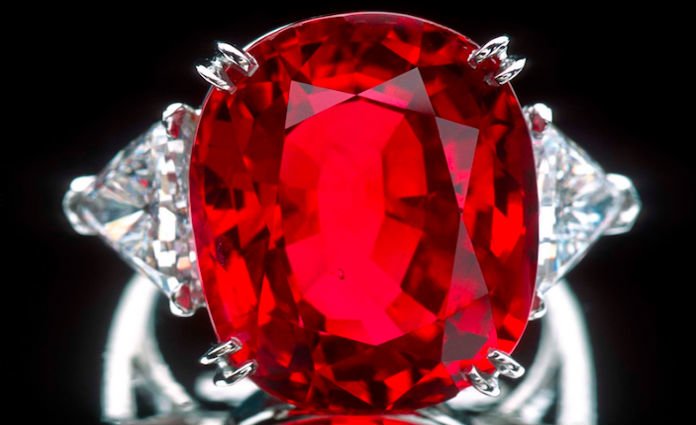All About Ruby: The July Birthstone
The primary birthstone for the month of July is a red variety of the mineral corundum that goes by the name of ruby.
The Origins and Cultural Significance of Rubies
The word ruby stems from “ruber,” the Latin word for red. The ruby is one of the traditional cardinal gemstones.
The Mogok Valley in upper Myanmar (formerly known as Burma) was, for quite some time, the world’s main source for quality rubies, with several from that region selling at auction for record-breaking numbers. In 2003, however, the United States banned the import of rubies from Burma because of unethical practices by the country’s government, its military control over the mines, and the slave-like conditions in which miners were forced to work. In September of 2016, President Barack Obama lifted the ban on both rubies and jade coming from Myanmar so that the area could potentially benefit from trade relationships since at the time it was in the process of becoming a democratic nation.
Often referred to as the “King of Precious Stones,” the ruby is one of the most popular, sought-after, and historically significant of all the world’s colored stones. Religiously speaking, rubies are mentioned four times in the Christian Bible and are held in high regard in Hindu beliefs. In many Asian cultures, rubies were used as adornments on armor in order to protect the soldiers who wore them. They were also used on the harnesses of noblemen in India and China and were buried beneath the foundations of buildings because it was believed the gem would bring security and good fortune to the structure. Trade of rubies in China goes back to 200 B.C. where the gems were bartered on China’s North Silk Road.
Notable Ruby Jewelry

The Liberty Bell Ruby carved by Alfonso de Vivanco.
The largest ruby ever mined was an eight-and-a-half-thousand-carat gemstone out of East Africa that weighed four pounds and was sculpted into a miniature form of the United States’ Liberty Bell in 1976 by sculptor Alfonso de Vivanco for the United States Bicentennial. The stone was stolen from a jeweler in Delaware in a heist in 2011 and never recovered.

The Sunrise Ruby and Diamond Ring by Cartier.
Another world-famous ruby that also happens to be the most expensive ruby ever sold is the Sunrise Ruby of Burmese origin which sold in May of 2015 at a Sotheby’s auction in Geneva, Switzerland for over $30 million USD. If you’re interested in seeing more spectacular, history-making rubies, check out this post.
The Properties and Hardness of Rubies

The most sought-after color for rubies (and the color found largely in gems mined in the Mogok Valley) is a color known as “pigeon’s blood.” A bright, vibrant red color that is natural, unheated, and contains no pink hue. The quality of a ruby is determined by the gem’s color, cut, and clarity. These factors, along with the stone’s carat weight, affect its overall value, similar to how a diamond’s value and, therefore, price is determined.
Rubies have a hardness of 9.0 on the Mohs scale, making them one of the harder gemstones in existence. They range in color from blood red to reddish pink, to reddish purple, to orangey red, to deep crimson. Gems that are determined to be too pink with no hue of red are often labeled as pink sapphires since the sapphire is made of the same mineral as the ruby.







